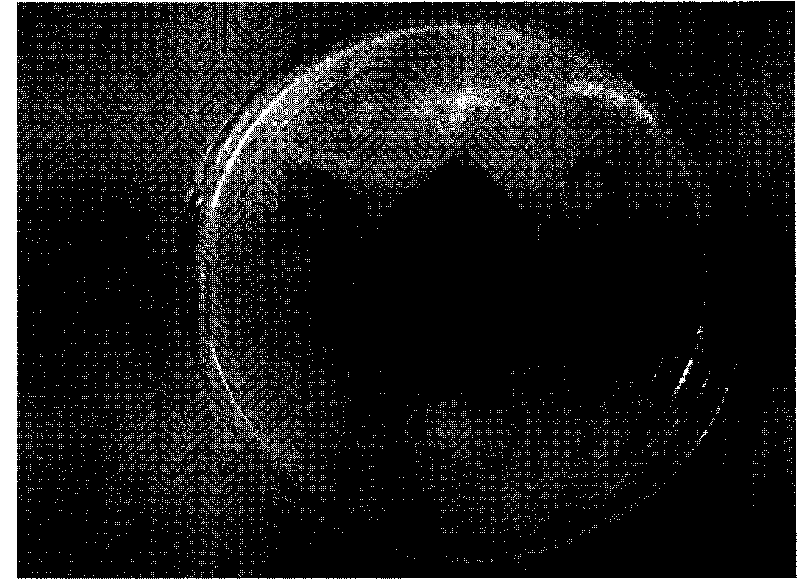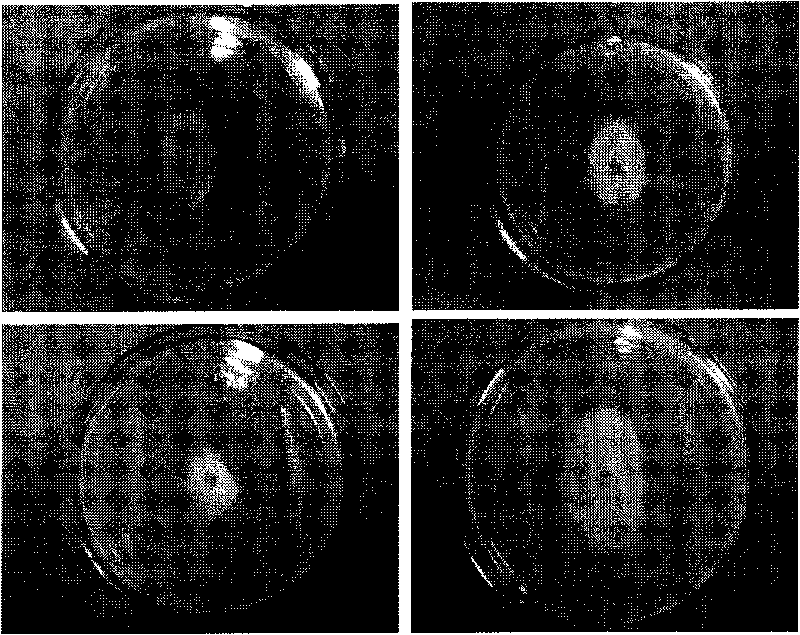Pseudomonas aeruginosa D10, and preparation method and applications thereof
A Pseudomonas aeruginosa, colony technology, applied in the fields of botanical equipment and methods, biochemical equipment and methods, applications, etc., can solve problems such as affecting human health and the environment, non-target biological poisoning, loss of disease resistance, etc., Achieve good development and application prospects, broad antibacterial spectrum, and easy industrial production.
- Summary
- Abstract
- Description
- Claims
- Application Information
AI Technical Summary
Problems solved by technology
Method used
Image
Examples
Embodiment 1
[0030] Example 1 Plate antagonism of Pseudomonas aeruginosa D10 on corn leaf spot fungus and corn leaf spot fungus
[0031] Pseudomonas aeruginosa D10 was obtained by plate face-off screening. In the potato sucrose medium PDA (wherein add 5g / L peptone, the pH value is adjusted to 6.5) plate central insert diameter is 5mm big and small spot mycelia piece of corn, connect three 5mm in diameter symmetrically subsequently The center of the filter paper is 25 mm away from the central hyphae block, and finally 10 μL of bacterial culture solution is added to each filter paper piece, and the plate not connected with Pseudomonas aeruginosa culture solution is used as a blank control, repeated three times, and placed After culturing in an incubator at 28°C for 7 days, the radius of the inhibition zone was measured. figure 1 It can be seen that Pseudomonas aeruginosa D10 significantly inhibits the growth of corn leaf spot fungus, by figure 2 It can be seen that Pseudomonas aeruginosa ...
Embodiment 2
[0032] Example 2 Determination of Pseudomonas aeruginosa D10 indoor control effect
[0033] Sweet corn seeds sterilized by 0.1% NaClO were treated with culture solution of antagonistic strains (bacteria content was 1.2×10 9 cfu / ml) after soaking for 5 hours, sow in flower pots (soil disinfection), sow 10 seeds in each pot, and set the seeds soaked in sterile water as a control. Sow 10 pots for each treatment, and when the three leaves grow to one new (about 21 days), spray the spore suspension of Pseudomonas spp. and B. maize, place them in the greenhouse for cultivation after inoculation, and investigate the incidence of the disease 7 days after the inoculation of the pathogen. The results showed that the disease indexes of large and small spot diseases of maize plants treated with Pseudomonas aeruginosa D10 strain were 35.1 and 57.4 lower than those of the control, respectively.
Embodiment 3
[0034] Example 3 Antagonism of Pseudomonas aeruginosa D10 to various pathogenic bacteria
[0035] The antagonism of Pseudomonas aeruginosa D10 against five pathogenic bacteria, Curvularia dahliae, Verticillium dahliae, Wheat scab, Banana anthracnose and Banana wilt, was tested by plate confrontation method. Screening was carried out with reference to the plate confrontation method. In the center of the potato sucrose medium PDA (adding 5g / L peptone and adjusting the pH value to 6.5) a piece of mycelium of pathogenic bacteria with a diameter of 5mm was placed in the center of the plate, and at a distance of 25mm from both sides of the pathogenic bacteria, an inoculation loop was used to inoculate the endophytic bacteria , with only inoculation of pathogenic bacteria as a control, cultured in an incubator at 28°C for 7 days, measuring the width of the inhibition zone, and repeating 3 times for each treatment. The results are shown in Table 1 and image 3 . From image 3 The ...
PUM
 Login to View More
Login to View More Abstract
Description
Claims
Application Information
 Login to View More
Login to View More - R&D
- Intellectual Property
- Life Sciences
- Materials
- Tech Scout
- Unparalleled Data Quality
- Higher Quality Content
- 60% Fewer Hallucinations
Browse by: Latest US Patents, China's latest patents, Technical Efficacy Thesaurus, Application Domain, Technology Topic, Popular Technical Reports.
© 2025 PatSnap. All rights reserved.Legal|Privacy policy|Modern Slavery Act Transparency Statement|Sitemap|About US| Contact US: help@patsnap.com



